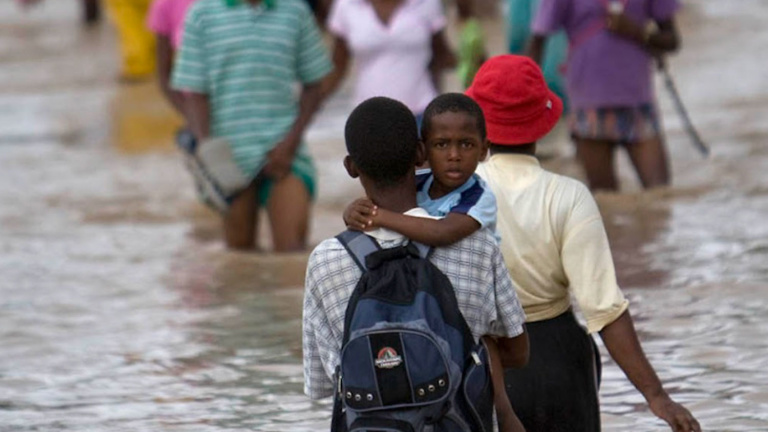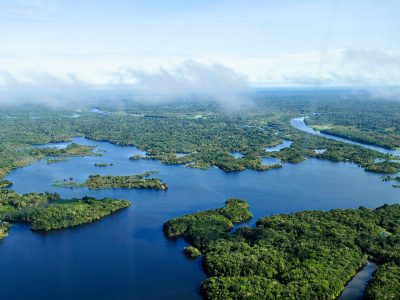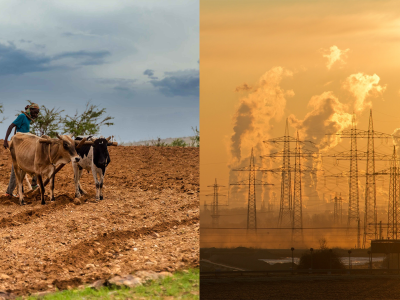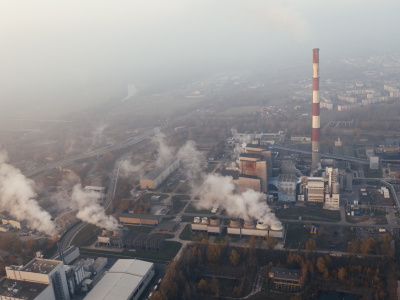
A cross-cutting agenda: Gender, climate change and conflict
Gender equality is crucial to achieve climate justice, to resolve conflict and to maintain peace. Many of the risks and vulnerabilities in the conflict–climate nexus have a clear gender component. Addressing them calls for gender mainstreaming and gender balancing, while highlighting the need for local solutions and capitalising on global opportunities for advancing resilience.
Gender equality is crucial for climate justice
Just as climate change is a cross-cutting issue, so too is gender equality. Gender equality is crucial to achieve climate justice, to resolve conflict and to maintain peace. In Africa and beyond, communities face social, economic and political pressures associated with our changing climate.
Since the adoption of UN Security Council Resolution 1325 in 2000, governments have progressively acknowledged that protecting women’s rights and promoting the participation of women alongside men in conflict resolution is vital to international peace and stability.
These understandings help us to recognise that advancing gender equality must be at the heart of policies and programmes to improve climate adaptation and the resilience of communities to natural and human-induced disasters worldwide. This is as much about enhancing the effectiveness of international and local efforts as it is about protecting and promoting human rights. To that end, I call for strengthening “gender mainstreaming”, which refers to the integration of perspectives, expertise, needs and aspirations of both men and women in policy design and implementation, as well as ensuring “gender balance”, which refers to the equal representation and participation of men and women in all processes.
Gender and vulnerability in the climate–conflict nexus
Both climate change and violent conflict exacerbate gender inequalities. The overlap between climate change and conflict produces a myriad of vulnerabilities that differentially impact men and women (Alam, Bhatia and Mawby, 2015). Two interrelated areas of risk are (1) migration and forced displacement and (2) sexual and gender-based violence or abuse.
Women and children constitute the overwhelming majority of the some 71 million refugees, internally displaced persons, and asylum seekers worldwide. (Rogers et al., 2019) Today, there are more people displaced than ever before in recorded history, and three of the top five origin countries are in Africa: Sudan, South Sudan and Somalia (UNCHR, 2017). While many factors contribute to migration, the risk of displacement due to climate change and natural disasters increased multifold in the last fifty years (UNHCR, 2018). Yet, today’s international legal architecture and policy frameworks are sorely inadequate for dealing with climate change-induced displacement.
People who migrate across borders in response to soil erosion, drought and other climate-related extreme weather events or disasters cannot seek asylum under the 1951 UN Refugee Convention. That Convention recognises refugees only as those fleeing persecution based on their race, religion, nationality or membership in a social or political group.
Low-lying countries across the world are especially susceptible to land loss caused by rising sea levels. This forces people to migrate inland and foments conflict over land and natural resources. In the Global South, the impacts of climate change all too often transect poverty, violence and discrimination. This is the case, for instance, in northern Nigeria, where extremist groups like Boko Haram have significantly disrupted communities by recurrently targeting women and girls (Vivekananda et al., 2019).
Research demonstrates that the convergence of armed conflict with climate-induced natural disasters heightens the incidence of sexual and gender-based violence. In Kenya, for example, women’s health, economic well-being and physical safety suffered when drought intensified ongoing pastoralist conflicts. In this case, women – who are predominantly responsible for fetching water and fuel across Africa – faced much longer daily treks, which increased their exposure to illness and injury. At the same time, families were much more likely to marry off girls to ease the economic burden inflicted by crop failure and livestock losses, while women’s desperation to survive and provide for their family worsened their vulnerability to sexual exploitation and abuse (UNDP, 2011: 16).
Displacement augments both men’s risk of being trafficked for labour and women and girls’ risk of being trafficked for sex. Displacement heightens the health risks that face women and girls, particularly new and expectant mothers. In the aftermath of cyclone Idai, which struck Mozambique, Malawi and Zimbabwe in March 2019, pregnant women and girls were left without basic hygiene and sanitation; this significantly undermined their ability to give birth safely (UNFPA, 2019).
Despite these and other ways in which gender inequality transects climate change, conflict and displacement, it is important to remember that men can also be victims, just as women can also be agents. It is therefore salient to refrain from essentialising men and women as homogeneous categories, but rather to mainstream gender into analyses and actions.
In this regard, some promising developments are underway to advance gender equality in addressing climate change. Despite the slow progress to date in understanding and responding to the relationship between gender, climate change and conflict, some positive examples of local, national and global solutions point to potential opportunities for further action.
Civil society-led grassroots initiatives
At the local level, several innovative initiatives in various African contexts are combining efforts to tackle gender inequality with initiatives to adapt to and mitigate the effects of climate change. For example, the Green Belt Movement, established by Kenyan Nobel Peace Laureate Wangari Mathaai, has worked to promote gender equality as part of environmental sustainability since 1977. The focus is on land tenure, agricultural production, tree planting, soil health and water storage.
Another initiative is Ghana Bamboo Bikes. Led by female entrepreneurs, it creates jobs for women in a sector traditionally dominated by men. At the same time it provides a low-cost transportation option for rural men and women, reducing dependence on fossil-fuel run motorised vehicles.
Solar Sister is another example. This initiative has reached 1.6 million people across Africa by harnessing technology and training women to sell household items that run on renewable resources. Examples are clean cookstoves, solar lamps and other clean energy products. This contributes to reduce both energy poverty and greenhouse gas emissions from the burning of firewood or coal – while it also protects families against respiratory diseases caused by inhaling noxious gases.
Such civil society-led grassroots initiatives are commendable and make measurable differences in the communities they serve. However, they cannot take the place of national and regional efforts.
Broader, more macro-level initiatives
Recognising the importance of gender mainstreaming and gender equality, African countries including Egypt, Liberia, Mozambique, Tanzania and Zambia have adopted Climate Change Gender Action Plans in the last decade (Babugura, 2019). While others are set to follow suit, it is important to remember that implementation is key to effectuating change.
Under the UN Framework Convention on Climate Change (UNFCCC), a Gender Action Plan was established in 2017. That Plan aims to improve gender mainstreaming within the UNFCCC’s work, again highlighting the overlap between climate change, violent conflict and displacement.
Despite this recent progress, however, women continue to be underrepresented in the political and scientific teams focused on climate change and violence. Indigenous populations and members of minority groups are likewise marginalised. The UNFCCC recently raised concern about the vulnerability of and violence against gender non-conforming and LGBT+ persons, as they too have been largely excluded from decision-making processes (UNFCCC, 2017).
It is important to ensure that national and regional processes link up with and feed into global efforts. The UN’s Sustainable Development Agenda recognises gender equality as essential to achieving prosperity. It also places unprecedented focus on environmental protection and conservation as critical for growing economies and securing peace. With the 2030 deadline for countries to meet the Sustainable Development Goals fast approaching, mainstreaming gender into climate change resilience, poverty alleviation and peacemaking efforts is becoming more and more time sensitive.
Adverse impacts clearer with each passing day
The heightened risks and adverse impacts associated with climate change are clearer with each passing day. However, we have yet to arrive at an adequate understanding and response to the gendered dimensions of climate-related natural disasters, armed conflict and forced displacement. The next decade will be crucial, not only for building climate change resilience, but also for mediating conflicts that transect environmental disasters and mass migrations stemming from the loss of safe and sustainable livelihoods. What actionable steps can we take now to address these urgent challenges? Here, four areas of future work can be considered key.
First is research. Though scholarly works and policy reports increasingly highlight gender, much more research is needed to understand the relationship between gender, conflict and climate change. Collecting, sharing and paying attention to gender-disaggregated data is essential for evidence-based decision-making to address climate change and conflict. Future research should document, investigate and analyse both impediments and opportunities for change. To close knowledge and implementation gaps, scholars and practitioners must collaborate and make concerted efforts to build up qualitative and quantitative data on the climate–conflict nexus.
Second is investment. It is difficult to overstate the need for greater investment in, recognition of and support for local civil society initiatives focused on gender, climate change and conflict. Also vital is to develop national budgets that consistently and adequately allocate spending power for gender mainstreaming in addressing climate change and conflict. Responsibility for expanding such investment lies not only with national governments and foreign donor agencies but also, crucially, with the private sector. Companies can and should do more to tackle gender inequality, human rights abuses and conflict as part of how they do business. This includes boosting the resources and human capital they dedicate to gender-sensitive environmental protection.
The third area is inclusion. Diversifying national climate delegations is a first step towards integrating a variety of perspectives into decision-making and problem-solving. Improving representation and inclusion at the international and national levels is the responsibility of governments and multilateral organisations. Processes should include and uplift marginalised segments of society.
Fourth is cooperation. Climate change is a global issue that knows no boundaries. This means that the only way to advance gender equality to address climate change and climate-related conflicts and displacements is by bolstering cooperation across sectors and industries, forging connections between academics and practitioners, and building partnerships within and across regions.
Further reading
Alam, M., Bhatia, R. and Mawby, B. 2015. Women and climate change: Impact and agency in human rights, security, and economic development. Washington, DC: Georgetown Institute for Women, Peace and Security.
Babugura, A. 2019. Gender equality in combatting climate change: The African context. Policy Briefing: Women, Power and Policymaking. Africa Portal August.
Rogers, Lucy et al. 2019. Displaced people: Why are more fleeing home than ever before? BBC News.
UNDP. 2011. Disaster-conflict interface: Comparative experiences. New York: Bureau for Crisis Prevention and Recovery.
UNFCCC. 2017. Decision 3/CP.23: Establishment of a gender action plan. FCCC/CP/2017/11/Add.1. Lima: Subsidiary Body for Implementation.
UNCHR. 2018. Part II: Global compact on refugees. New York: General Assembly Official Records.
UNCHCR. 2017. Global trends: Forced displacement in 2016. Geneva.
Vivekananda, J. et al. 2019. Shoring up stability: Addressing climate and fragility risks in the Lake Chad region. Berlin: Adelphi.
Other references
Weerasinghe, S. 2018. In harm’s way: International protection in the context of nexus dynamics between conflict or violence and disaster or climate change. Geneva: UN Refugee Agency.
IUCN. 2019. Gender and Environment Resource Center.
UN Women and Mary Robinson Foundation – Climate Justice. 2013. The full view: Advancing the goal of gender balance in multilateral and intergovernmental processes. New York: United Nations Entity for Gender Equality and the Empowerment of Women and Mary Robinson Foundation – Climate Justice.
UNFPA (United Nations Population Fund). 2019. Catastrophic cyclone Idai leaves pregnant women vulnerable in three countries. News. 25 March.
About the author
Mayesha Alam is the author of “Women and Transitional Justice” (Palgrave Macmillan 2014) and co-editor of “Women and Gender Perspectives in the Military” (Georgetown University Press 2019). She is currently completing her PhD at Yale University, where her research focuses on the causes and consequences of armed conflict. Mayesha previously served as the deputy director of the Georgetown Institute for Women, Peace and Security, and has worked with the United Nations, the World Bank and the Organization for Security and Co-operation in Europe. She has taught international relations at Georgetown University and New York University.
Read the full magazine issue








